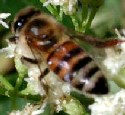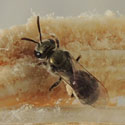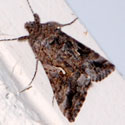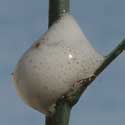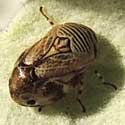Wire Lettuce
Desert Straw
Stephanomeria pauciflora
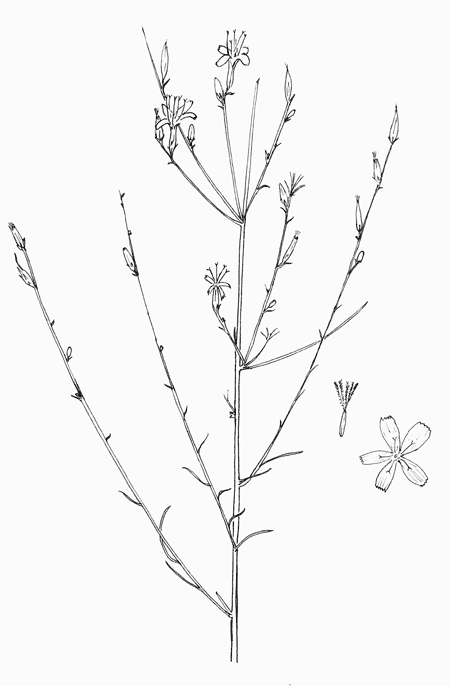
Sponsored Links:
Asteraceae -- Aster and Sunflower Family
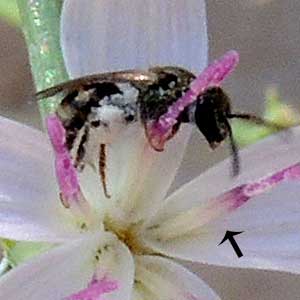
This sweat bee is gathering pollen from the flowers. The pollen is white and granular - a quantity can be seen adhering to the bee's hind legs. The pollen is contained within tube-like anthers - the arrow points to a set of five stamens with the tubes oriented vertically. A pink stigma sticks above the stamens. The bee was observed to use her abdomen to push the pollen grains up and out of the the anthers. Flowers, in their great variety, present their resources - pollen and nectar - in many different fashions. Bees' behavior and morphology determine if the bee-flower relationship works for the benefit one or both. The plant benefits when cross pollination is achieved.
Honey Bee
Sweat Bee
PERENNIAL HERB: Grows and flowers nearly year round. Large plants up
to a meter tall and a meter wide are woody-stemmed below. Mature plants develop many
curving stems, some living and many dead; the plant thus resembles a straw basket. Broken green stems
exude milky sap like other members of the lettuce subfamily.
RANGE: Quite common on rocky slopes, washes and on disturbed sites throughout the
Sonoran Desert in Arizona. An occasional volunteer in city lots and gardens, Phoenix and Tucson, Arizona
areas.
FLOWERS: Lavender flowers, less than a cm in diameter, appear to have five or six petals. However, these are
composite flowers - each 'petal' is actually a separate flower - notice the five notches at
tip of each representing five, fused petals. Each of the composite's flowers is equipped with an
ovary, a two-parted stigma and five stamens.
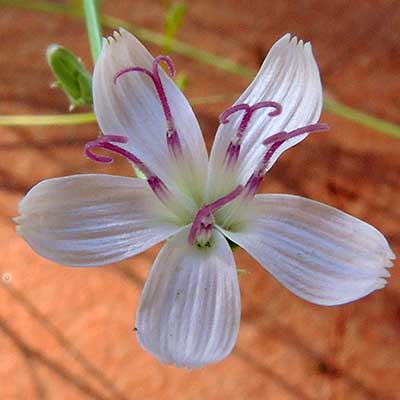
ACHENE: Each seed is topped with a plumose pappus that sheds easily.
UNARMED.
LEAVES: Small, linear leaves are scale-like and are shed after drought leaving the
green, wiry stems to photosynthesize. The many dead, arching straw stems act as a sunscreen
allowing the plant to flourish well into hot, dry periods.
The small flowers contain a good quantity of nectar that serves populations of native solitary bees and butterflies, while the foliage supports a number of herbivorous insect species. The cabbage looper moth feeds as a caterpillar on this plant as well as many other plants. Spittlebugs live inside slimy foam and suck the wire lettuce's sap. Butterflies can use their proboscis to reach nectar deep inside the tubular florets. Follow the thumb images below for more information about these wire-lettuce insects.
